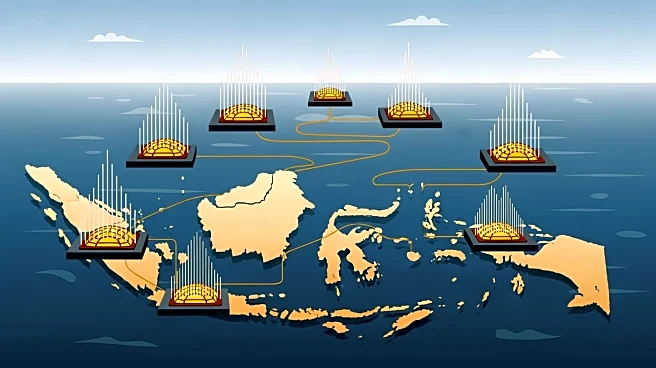What's Happening?
A 5.7 magnitude earthquake occurred in the Gulf of California, Mexico, early Friday morning, as reported by the U.S. Geological Survey (USGS). The earthquake's epicenter was located 46.6 miles northeast
of Santa Rosalía, Mexico, with a depth of 6.2 miles. The USGS has issued a green alert, indicating a low likelihood of casualties and economic losses due to the earthquake. This alert suggests that the impact on the surrounding areas is expected to be minimal, with little to no significant damage anticipated. The situation is being monitored, and updates are expected as more information becomes available.
Why It's Important?
The earthquake in the Gulf of California is significant as it highlights the ongoing seismic activity in the region, which can have implications for both Mexico and the United States. While the green alert suggests minimal immediate impact, the event underscores the importance of preparedness and monitoring in earthquake-prone areas. The USGS's alert system plays a crucial role in informing local authorities and residents about potential risks, allowing for timely responses to mitigate any unforeseen consequences. The earthquake also serves as a reminder of the interconnectedness of geological events across borders, emphasizing the need for international cooperation in disaster response and management.
What's Next?
As the situation develops, authorities in Mexico and the United States will continue to monitor the region for any aftershocks or changes in seismic activity. Local emergency services may conduct assessments to ensure infrastructure stability and public safety. The USGS will likely provide further updates and analyses to refine their understanding of the earthquake's impact. Residents in the affected areas are advised to stay informed through official channels and adhere to any safety guidelines issued by local authorities. The event may also prompt discussions on improving earthquake preparedness and response strategies in the region.
Beyond the Headlines
The earthquake in the Gulf of California may have broader implications for regional seismic research and policy-making. It could lead to increased investment in earthquake detection and early warning systems, enhancing the ability to predict and respond to future seismic events. Additionally, the event may influence building codes and infrastructure development in earthquake-prone areas, promoting resilience and safety. The collaboration between Mexican and U.S. geological agencies could strengthen cross-border efforts in disaster management, fostering a more unified approach to addressing natural disasters.












